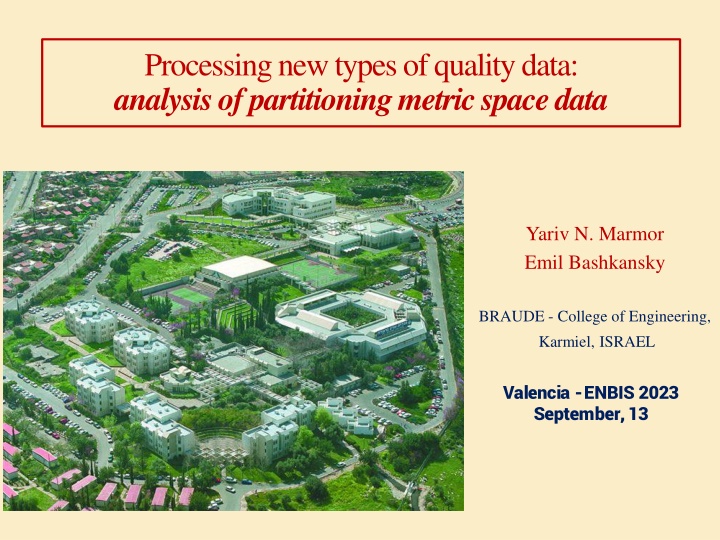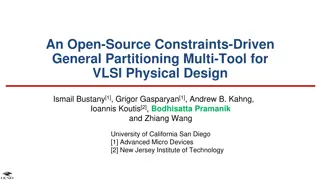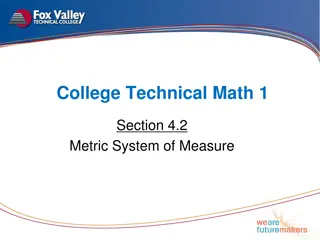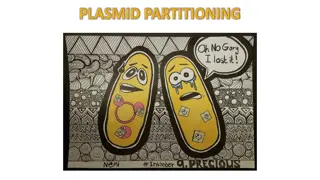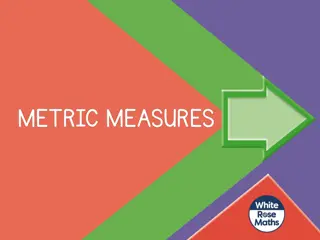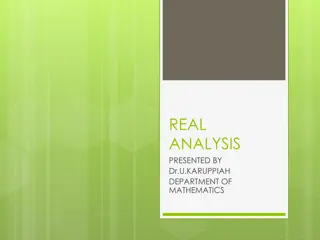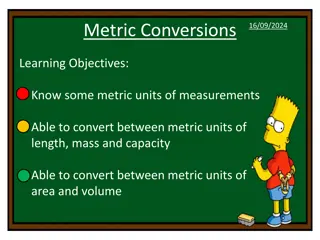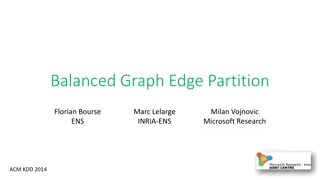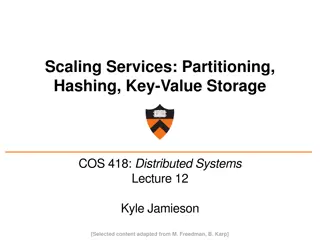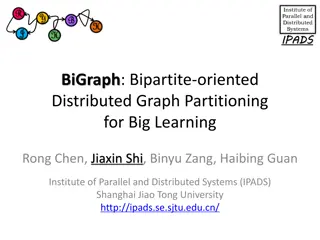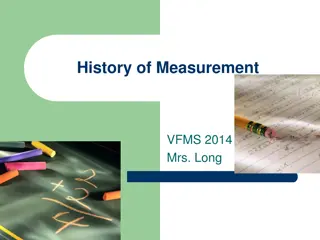Analysis of Quality Data Partitioning Metric Space
This research delves into new types of quality data analysis through partitioning metric space. It explores tree-structured data, nominal and ordinal data, similarity and dissimilarity, dispersion measures, data partitioning, data clustering, and more. The study examines degrees of connection, sum of distances, and segregation power index. Examples and case studies on quality cost distributions are also presented.
Download Presentation

Please find below an Image/Link to download the presentation.
The content on the website is provided AS IS for your information and personal use only. It may not be sold, licensed, or shared on other websites without obtaining consent from the author.If you encounter any issues during the download, it is possible that the publisher has removed the file from their server.
You are allowed to download the files provided on this website for personal or commercial use, subject to the condition that they are used lawfully. All files are the property of their respective owners.
The content on the website is provided AS IS for your information and personal use only. It may not be sold, licensed, or shared on other websites without obtaining consent from the author.
E N D
Presentation Transcript
Processing new types of quality data: analysis of partitioning metric space data Yariv N. Marmor Emil Bashkansky BRAUDE - College of Engineering, Karmiel, ISRAEL Valencia - ENBIS 2023 September, 13
Yariv N. Marmor, Emil Bashkansky " Processing new types of quality data" Quality and Reliability Engineering International ,36 (8), 2621-2638, 2020 2.2 2.3 2.4 2.5 Tree- structured data 2.6 2.1 Nominal data Ordinal data Strings Product or process distribution Ranked/ prioritized data 3.1 Similarity/dissimilarity 4.1 4.1 4.1 4.1 4.1 4.1 and closeness/distance 4.1.1 4.1.2 4.1.3 4.1.4 4.1.5 4.1.6 3.2 Metrological aspects 4.2 4.2 4.2 4.2 4.2 4.2 4.2.1 4.2.2 4.2.3 4.2.4 4.2.5 4.2.6 3.3 Data aggregation or 4.3 4.3 4.3 4.3 4.3 4.3 fusion and location 4.3.1 4.3.2 4.3.3 4.3.4 4.3.5 4.3.6 measure 3.4 Dispersion measure 4.4 4.4 4.4 4.4 4.4 4.4 and variation analysis 4.4.1 4.4.2 4.4.3 4.4.4 4.4.5 4.4.6 3.5 Data partitioning * * 3.6 Data clustering
Data/objects partition: degrees of connection (dc) split = + dc dc dc to tal in e t r intr a
Data/objects partition: sum of distances (SD) split *C A* B* *D Segment 1 Segment 2 Sum of Distances: Intra {(SD)intra= d(A,B)+d(C,D)} Sum of Distances: Inter {(SD)inter= d(A,C)+d(A,D)+d(B,C)+d(B,D)} Sum of Distances: Total {(SD)total= d(A,B)+d(C,D)+d(A,C)+d(A,D)+d(B,C)+d(B,D)}
Segregation power index - SP / / MD MD SD SD dc dc = = inter inter int e r SP intra int a r in r t a
Example 1: Distribution of quality costs proportions by the four main categories (Rosenfeld et.al, 2019) Company 1 Company 1 Company 2 Company 2 Company 3 Company 3 Company 4 Company 4 Company 5 Company 5 Company 6 Company 6 Company 7 Company 7 Company 8 Company 8 Prevention Prevention Costs Costs Appraisal Appraisal Costs Costs 0.19 0.05 0.07 0.19 0.11 0.31 0.19 0.23 0.22 0.15 0.13 0.35 0.47 0.12 0.32 0.23 Internal Failure Internal Failure Costs Costs 0.14 0.28 0.18 0.27 0.19 0.14 0.27 0.27 External External Failure Costs Failure Costs 0.45 0.52 0.62 0.19 0.23 0.43 0.22 0.27 100% 90% 80% 70% 60% 50% 40% 30% 20% 10% 0% Company 8 Company 7 Company 6 Company 5 Company 4 Company 3 Company 2 Company 1 Prevention Costs Appraisal Costs Internal Failure Costs External Failure Costs
Hellinger distances and SP calculation 4 Company Company 1 1 Company 2 Company 2 Company 3 Company 3 Company 4 Company 4 Company 5 Company 5 Company 6 Company 6 Company 7 Company 7 Company 8 Company 8 Company 1 Company 1 0.000 0.000 0.198 0.198 0.169 0.169 0.214 0.214 0.222 0.222 0.122 0.122 0.189 0.189 0.152 0.152 Company 2 Company 2 0.198 0.198 0.000 0.000 0.094 0.094 0.290 0.290 0.290 0.290 0.265 0.265 0.265 0.265 0.240 0.240 Company 3 Company 3 0.169 0.169 0.094 0.094 0.000 0.000 0.328 0.328 0.320 0.320 0.230 0.230 0.302 0.302 0.266 0.266 Company 4 Company 4 0.214 0.214 0.290 0.290 0.328 0.328 0.000 0.000 0.120 0.120 0.269 0.269 0.030 0.030 0.104 0.104 Company 5 Company 5 0.222 0.222 0.290 0.290 0.320 0.320 0.120 0.120 0.000 0.000 0.317 0.317 0.127 0.127 0.191 0.191 Company 6 Company 6 0.122 0.122 0.265 0.265 0.230 0.230 0.269 0.269 0.317 0.317 0.000 0.000 0.244 0.244 0.178 0.178 Company 7 Company 7 0.189 0.189 0.265 0.265 0.302 0.302 0.030 0.030 0.127 0.127 0.244 0.244 0.000 0.000 0.077 0.077 Company 8 Company 8 0.152 0.152 0.240 0.240 0.266 0.266 0.104 0.104 0.191 0.191 0.178 0.178 0.077 0.077 0.000 0.000 SD intra = 1.727 SD inter = 4.082 SD total = 5.809 dc intra = 12 dc inter = 16 dc total = 28 MD intra = SD intra/12 = 0.144 MDinter= SDinter/16 = 0.255 SP = 1.773
Examples of 2 preference chains consisting of 4 alternatives C C A > A > A > A A > A > A > A : : 1 3 4 1 2 2 2 1 4 3
Example 2: Preference/prioritization chains C C A > A > A > A A > A > A > A : : 1 3 4 1 2 2 2 1 4 3 A1 A2 A3 A4 A1 A2 A3 A4 A1 A1 0 1 -1 -1 0 -1 1 1 A2 A2 -1 0 -1 -1 1 0 1 1 A3 A3 1 1 0 1 -1 -1 0 -1 A4 A4 1 1 -1 0 -1 -1 1 0 C1 C2 ( (0 0 1 1 - -1 1 - -1 1 - -1 1 0 0 - -1 1 - -1 1 1 1 1 1 0 0 1 1 1 1 1 1 - -1 1 0 0) ) ( (0 0 - -1 1 1 1 1 1 1 1 0 0 1 1 1 1 - -1 1 - -1 1 0 0 - -1 1 - -1 1 - -1 1 1 1 0 0) )
Distance metric based on cosine similarity a b i i arccos i 2 i 2 i a b i i , a b = = ( , ) d a b
Five experts/judges have prioritized alternatives with judges no. 2 and no. 3 being women, while judges no.1, no.4 and no.5 were men (Vanacore et.al, 2019) Judge j 1 2 3 4 5 . 1 2 . 1 0 0 0.59 0.59 0.73 0.73 0.33 0.33 0.38 0.38 . 4 2 0.59 0.59 0 0 0.46 0.46 0.45 0.45 0.44 0.44 Judge 3 . 3 . 5 0.73 0.73 0.46 0.46 0 0 0.65 0.65 0.61 0.61 i 4 0.33 0.33 0.45 0.45 0.65 0.65 0 0 0.37 0.37 5 0.38 0.38 0.44 0.44 0.61 0.61 0.37 0.37 0 0 MDintra= [d2,3 + (d1,4+ d1,5+ d4,5)]/4 = 0.385 MDinter= [(d2,1 + d2,4+ d2,5) + (d3,1 + d3,4+ d3,5)]/6 = 0.578 SP = MDinter / MDintra = 1.502
SP distribution under given null/ homogeneity hypothesis H0 Does not depend on the location parameter of the origin data distribution Does not depend on the scale parameter of the origin data distribution Almost independent on shape parameter, especially for SP >1 Depends only on the type of partition, i.e., vector (n1, n2, , nk, , nm) 1 0.02 0.9 0.018 0.8 0.016 (2,2) Norm 0.7 0.014 Unif 0.6 0.012 PDF CDF Expo 0.5 0.01 0.4 0.008 Norm-CDF 0.3 0.006 0.95 0.2 0.004 0.1 0.002 0 0 0 1 2 3 SP 4 5 6
How amount of data influence SP distribution under H0 (10,10, 10) (n, n) m = 2 n = 10
Five experts/judges have prioritized alternatives with judges no. 2 and no. 3 being women, while judges no.1, no.4 and no.5 were men (Vanacore et.al, 2019) Judge j 1 2 3 4 5 . 1 2 . 1 0 0 0.59 0.59 0.73 0.73 0.33 0.33 0.38 0.38 . 4 2 0.59 0.59 0 0 0.46 0.46 0.45 0.45 0.44 0.44 Judge 3 . 3 . 5 0.73 0.73 0.46 0.46 0 0 0.65 0.65 0.61 0.61 i 4 0.33 0.33 0.45 0.45 0.65 0.65 0 0 0.37 0.37 5 0.38 0.38 0.44 0.44 0.61 0.61 0.37 0.37 0 0 MDintra= [d2,3 + (d1,4+ d1,5+ d4,5)]/4 = 0.385 MDinter= [(d2,1 + d2,4+ d2,5) + (d3,1 + d3,4+ d3,5)]/6 = 0.578 SP = MDinter / MDintra = 1.502
The null hypothesis: Gender equality and the absence of real preferences between alternatives SP0.95 = 1.476 and p value for calculated SP =1.502equals 4.39%
Modus operandi 10steps 1. 2. Decide on the population of objects under study (OUS). Make assumption about the type of the expected distribution of these objects within a homogeneous population. Choose distance metric suitable to this distribution Decide on the criterion that, in your opinion, can influence (heterogeneity hypothesis) and which levels serve as the basis for dividing/separating objects into groups (partition). Provide corresponding data partitioning/division Calculate SP Simulate SP distribution under H0 in accordance with partition vector (n1, n2, , nk, , nm) and the chosen distance metric. Every cycle of simulation process includes: a. Random generation of N data from a population of OUS (in accordance to step 1) characterized by the assumed distribution (in accordance to step 2). b. Distance matrix calculation (according to step 3) c. Partitioning these distances to inter and intra components in accordance to steps 4 and 5 d. SP calculation and back to a. Determine the alpha risk - of homogeneity hypothesis H0 rejection. Find (1- ) ) percentile of simulated SP distribution, or alternatively, p value of calculated SP. 10. Make final conclusion about the expediency discrimination/separation/segregation power by usual statistical methods according to previous step results. 3. 4. 5. 6. 7. 8. 9. of the made partition and its
Thank You for your attention! E-mail: ebashkan@braude.ac.il
